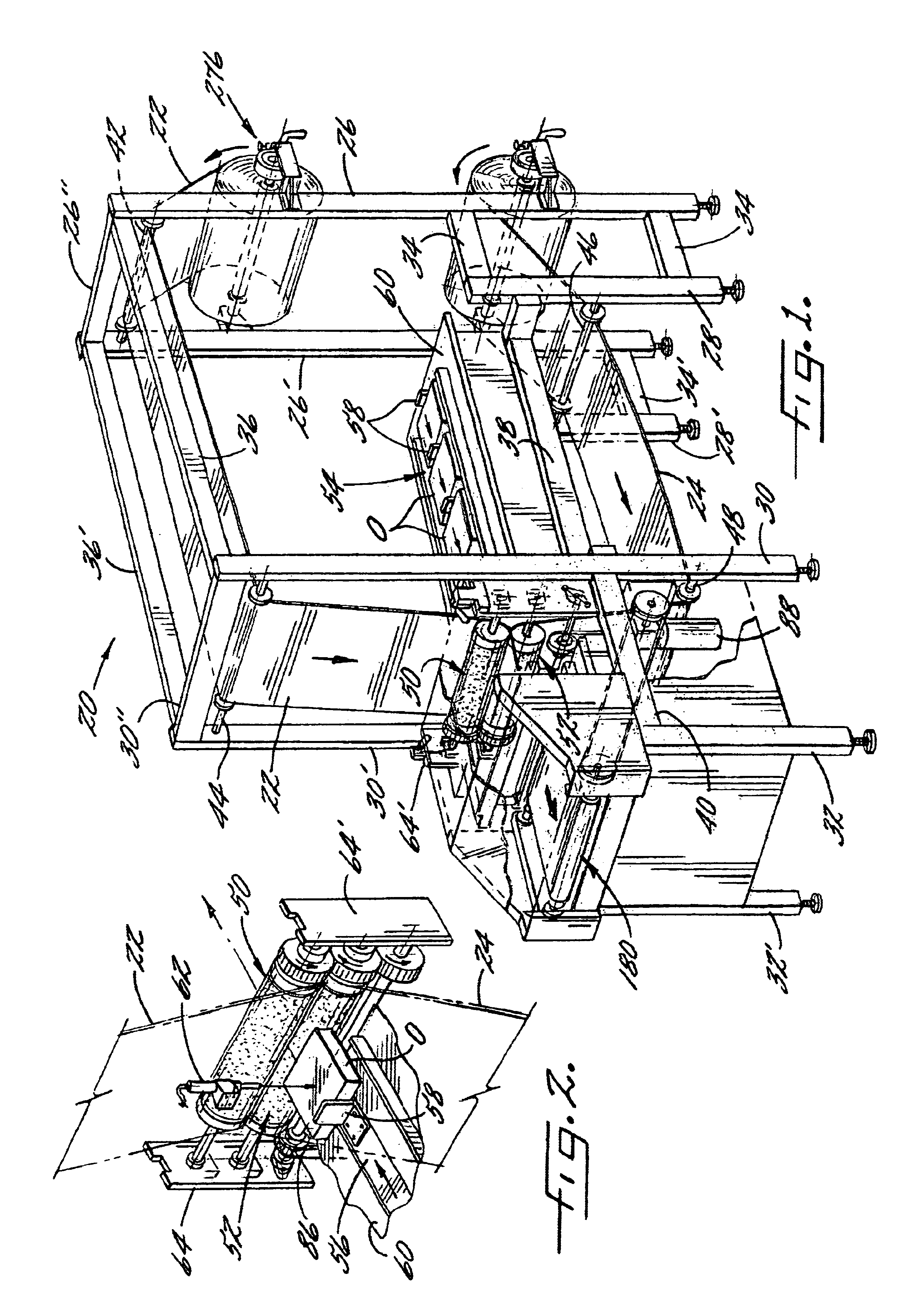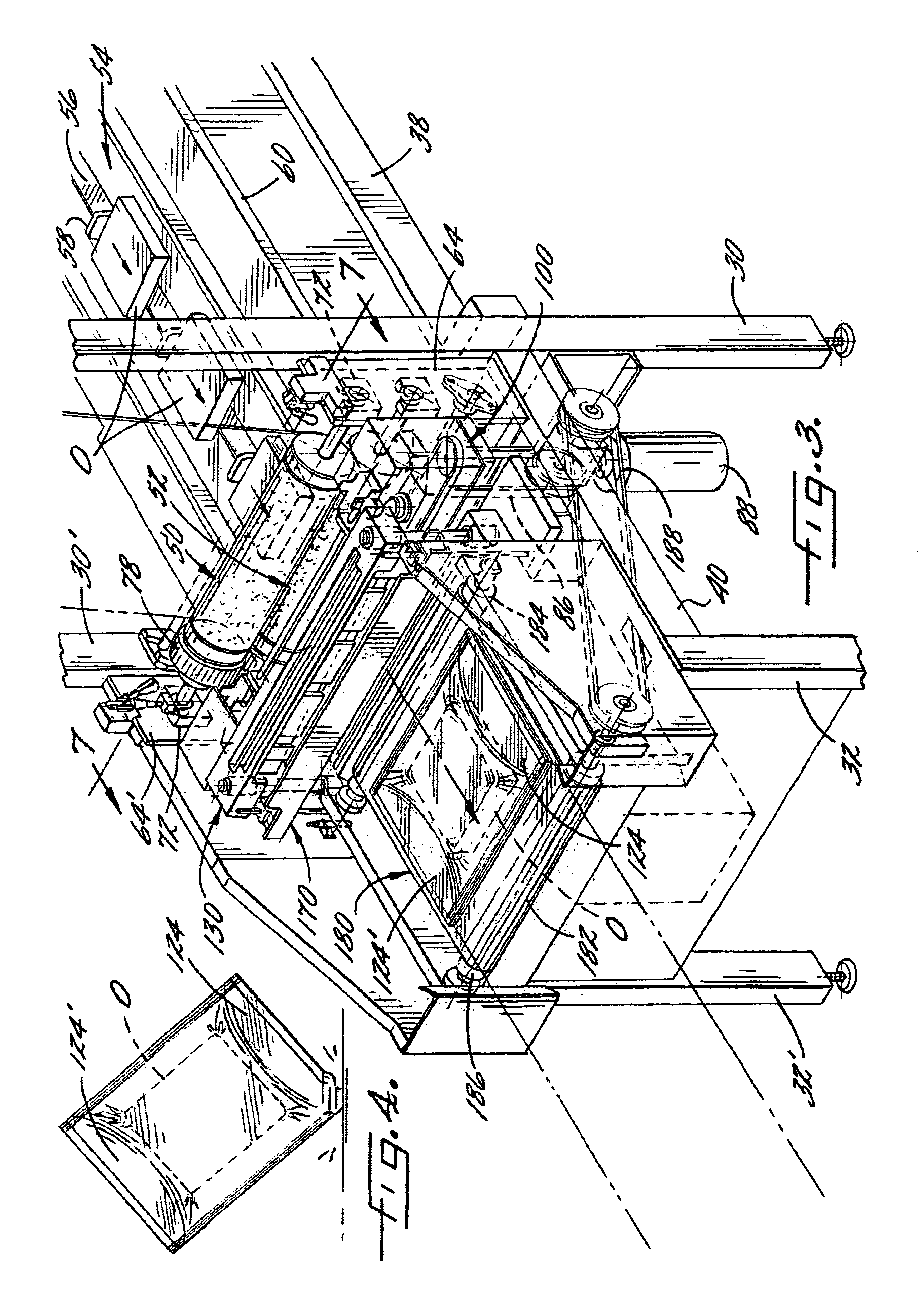Packaging apparatus and method
a technology of packaging apparatus and method, which is applied in the direction of bundling articles, bundling machine details, packaging goods types, etc., can solve the problems of machine disadvantage, object may be able to shift around in the resulting package, and is more susceptible to being damaged, so as to control the draw-off tension of the web
- Summary
- Abstract
- Description
- Claims
- Application Information
AI Technical Summary
Benefits of technology
Problems solved by technology
Method used
Image
Examples
Embodiment Construction
[0039]The present inventions now will be described more fully hereinafter with reference to the accompanying drawings, in which some but not all embodiments of the invention are shown. Indeed, these inventions may be embodied in many different forms and should not be construed as limited to the embodiments set forth herein; rather, these embodiments are provided so that this disclosure will satisfy applicable legal requirements. Like numbers refer to like elements throughout. Throughout the specification, where there are two of the same reference numbers one of which has a prime designation, the unprimed reference number refers to a component on the left side of the longitudinal centerline of the apparatus and the primed reference number refers to a corresponding component on the right side of the longitudinal centerline, as viewed in the downstream direction.
[0040]A packaging apparatus 20 in accordance with one embodiment of the invention is shown in FIG. 1. The apparatus 20 is of ...
PUM
| Property | Measurement | Unit |
|---|---|---|
| density | aaaaa | aaaaa |
| flexible | aaaaa | aaaaa |
| pressure | aaaaa | aaaaa |
Abstract
Description
Claims
Application Information
 Login to View More
Login to View More - R&D
- Intellectual Property
- Life Sciences
- Materials
- Tech Scout
- Unparalleled Data Quality
- Higher Quality Content
- 60% Fewer Hallucinations
Browse by: Latest US Patents, China's latest patents, Technical Efficacy Thesaurus, Application Domain, Technology Topic, Popular Technical Reports.
© 2025 PatSnap. All rights reserved.Legal|Privacy policy|Modern Slavery Act Transparency Statement|Sitemap|About US| Contact US: help@patsnap.com



